Wild Flowers - Green
A small number of plants have green flowers and they tend to be overlooked as they blend in well with the surrounding vegetation. Those shown here are mostly fairly common in the Park or of particular note.
Lords and Ladies
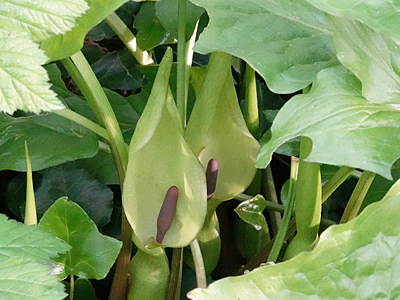
The brown spadix within a pale green spathe is unmistakeable in April and May. Later the berries appear, at first green and then bright red. Found in woods and hedgerows.
Ivy

A very common evergreen climber, found in all our woods and hedgerows. The flowers appear late in the year, from September until November. The berries turn black and remain all year.
Dog's Mercury
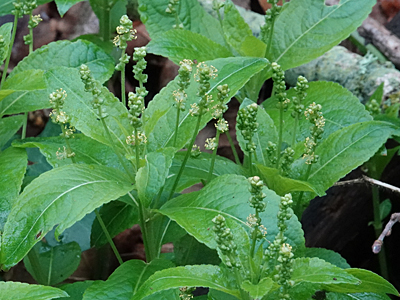
This very common plant carpets the floor of some of our woods in the Spring and can also be found along the old railway track. However, as it is very low-growing it often goes un-noticed.
Black Bryony
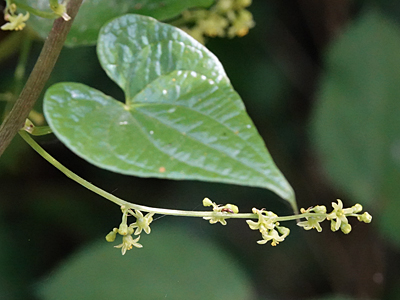
This hedgerow climber has distinctive heart-shaped leaves and the tiny flowers appear from May until August. Later it has red berries. Grows well at the eastern end of the railway track.
Alexanders
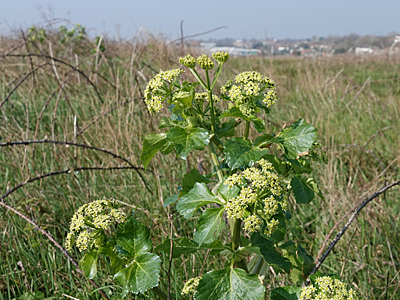
This edible plant grows well along the coast path and on roadside verges. Introduced by the Romans it flowers from March until June.
Opposite-leaved Golden Saxifrage
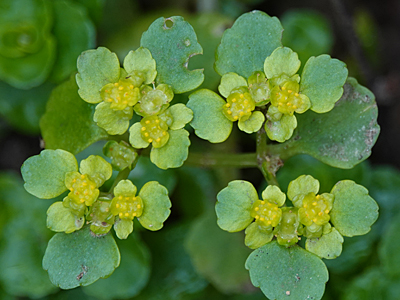
A large patch of this very low-growing plant can be found along the path through Combe Wood and produces its flowers, which have no petals, from March until June.
More Information
The Botanical Society of Britain & Ireland has a page with links to books, websites and downloadable files to help you identify wild plants.
A useful free guide was produced by the National Plant Monitoring Scheme.
A useful book is “Collins complete guide to British Wild Flowers”.
Photos on this page by Peter Hunnisett

